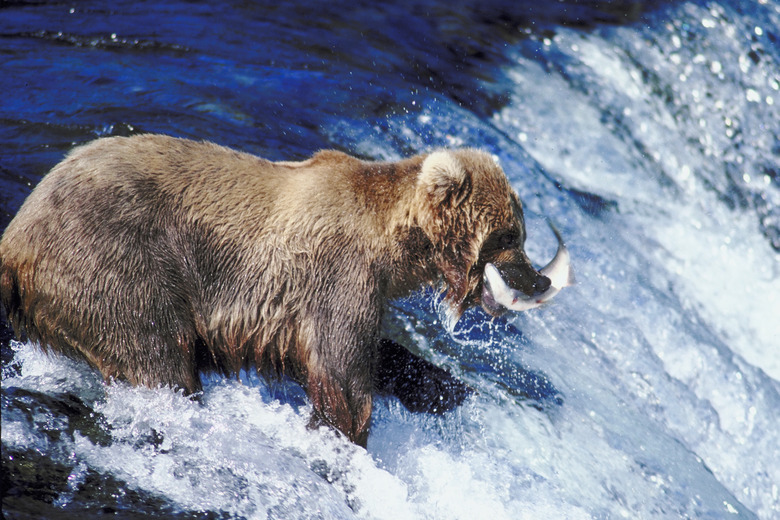Food webs and food chains illustrate the relationships between different organisms in an ecosystem by indicating “who eats who.” In a schematic that usually appears as a pyramid, organisms are divided based on their trophic level, or which consumer level they occupy. These pyramids illustrate the movement of energy from the broad base of producers at the bottom through the decreasing number of consumers up to the top of the pyramid. Food webs illustrate the same information but use lines to connect each consumer to what it eats.
Primary Consumers
First-level consumers, also known as primary consumers, eat producers such as plants, algae and bacteria. Producers comprise the first trophic level. Herbivores, the first-level consumers, occupy the second trophic level. First-level consumers do not eat other consumers, only plants or other producers. The physical size of first-level consumers varies greatly, ranging from tiny zooplankton to elephants, and all first-level consumers only eat producers.
Higher-Level Consumers
Secondary or second-level consumers eat primary consumers. Tertiary or third-level consumers eat lower-level consumers and are sometimes called final consumers. Some secondary and tertiary consumers eat plants as well as lower level consumers, making them omnivores. Humans are good example of omnivorous upper-level consumers; we eat primary producers (plants) as well as other consumers (animals).
General Trends and Differences
In a food web, the total energy or biomass is greatest among the producers, and the biomass generally decreases with each subsequent trophic level. For example, consider a food web that consists of plants, insects that eat the plants, chickens that eat the insects, and humans that consume the chickens. For the sake of simplicity, assume this is a closed web, without other producers or consumers. The biomass and stored energy of the plants is greater than the biomass and stored energy of the insects in the next level. The biomass and energy of the insects is greater than that of the chickens, which is greater than that of the humans they support. Nothing in nature is 100 percent efficient; energy is lost with each transfer. Consequently, in a given ecosystem there are generally more producers than 1st-level consumers, and more 1st-level consumers than 2nd-level consumers, and so on.
Role of Decomposers
Other critical components of a food web include producers, or plants, which use photosynthesis to transform energy from the sun into sugars that consumers can use. Also important are decomposers, organisms that feed on and break down animal and plant waste and dead organisms. Decomposers, also known as detrivores, make use of energy stored in dead plant and animal tissue. In the process, they release nutrients stored in the plants and animals they break down, cycling the nutrients back into the ecosystem for plants and animals to use.

